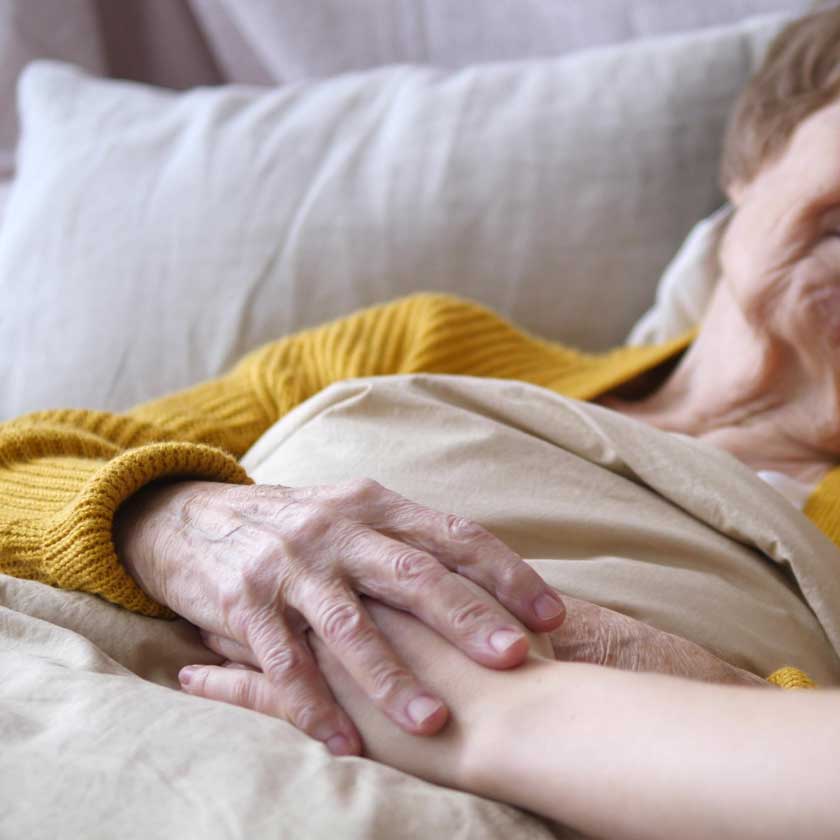Hourly care (sometimes called domiciliary care) is when a carer will visit you in your own home during the day for a few hours. They will support and help you with your day-to-day life, such as household tasks, personal care, preparing and cooking meals, or any other activity that allows them to maintain their independence and quality of life. Overnight care is when a carer stays in your home overnight to maintain your daily routine, it is often seen as an extension of hourly care, where a bit more support is required.
Live-in care provides full-time care and support from a dedicated carer who lives with you in your own home and understands your specific needs and routines however complex they may be.
Flexibility
Hourly care can provide consistent care whenever you need it. Care may vary with hourly care to supporting them twice or three times a week to supporting them every day. Many care agencies are less consistent but at TrustonTap, the service we provide is totally consistent to ensure you have the care you need, as and when you need it. If care is commissioned by a Local Authority you will not be in control of when the carer’s visit or who the carer is, they will rely on a bank of carers. If you are paying for care yourself, a company like TrustonTap will listen to your needs and time the care to best suit your needs.
With hourly care, you can change your hours if you need more help to suit your needs as they change over time. With Live-In care, this may give you more flexibility to see friends and family or go to the shops whenever you want as you are not dependent on when your carer is there or not. You may feel less rushed if you are going out as you will not have to stick to a time plan. Some may see this as giving you total flexibility to plan your days according to how the care recipient is each day.
Independence
As you get older, the feeling of losing your independence can be frustrating, as you may have to be more reliant on others. Often there maybe a reluctance to have any help as people don’t want to acknowledge they can no longer cope on their own.
An hourly carer can be a convenient option for those people who need some care either to move around the house more, to have some companionship through the day, or the chance to get out and see friends or go to an activity. Some extra help can improve your quality of life and help you keep to the daily routines you are used to
A live-in carer will be with you to help you remain independent for as long as possible, but also on hand when you want to pop out. They will help you look after your home and beloved pets, and host friends and family. Although they are with you all the time, which is a big step for many people, they may give you the independence you want to do more with help 24/7. Equally, if your loved one is very frail they may give you the peace of mind that if an accident does happen your carer is right there to respond appropriately.
Companionship
According to Age UK, more than 2 million people in England over the age of 75 live alone, and more than a million older people say they go for over a month without speaking to a friend, neighbour or family member. Loneliness can lead to conditions like depression, as well as increased blood pressure, and even an increased chance of stroke. Looking after a person’s emotional needs is just as important as physical needs to improve quality of life.
Live-in care can sometimes be all about companionship – your carer spends the day with you and usually will have similar interests as you. They will help with housekeeping, cooking, and personal hygiene but will also be someone you can talk to.
With hourly care, it is important to have that same familiar face seeing you a few times a week, and over time you can develop a good relationship with them. Having consistency of care is important for both the care recipient and also for the carer so they really can understand their client well and look forward to their visits.
Costs of Care
Both live-in care and hourly visiting care costs are dependent on the individual’s needs, the difference is hourly care is charged at an hourly rate and live-in care is usually charged weekly.
At TrustonTap, all visits are a minimum of one hour, ensuring care isn’t rushed. This can be several visits a day if required with prices between £20 per hour and £30 per hour.
With Live-in care the rate can vary with different circumstances, but typically the Standard Live-in care package is from £1,200 a week.


